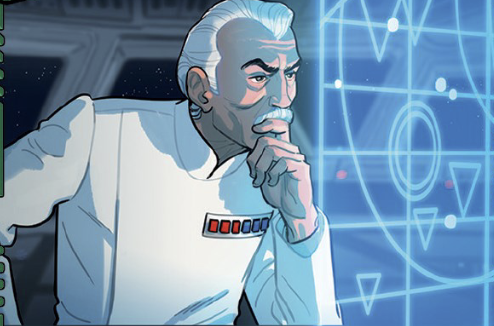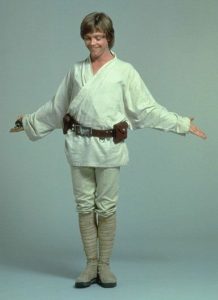
Trending Today

Welcome back to The Fifth Trooper’s coverage of Star Wars Unlimited TCG, now with the new and improved website layout! To see our past articles, check out our category page for Unlimited!
Twilight of the Republic previews have begun and FFG is showing a lot of new cards (you can check out my YouTube channel for more info on this — I do a YouTube Short for each new card and a longer video that goes into more detail on the past week’s previews every Saturday), so today we’re going to discuss evaluating cards, a key skill in card games in general and Star Wars Unlimited in particular. What makes a card good or bad? What stats are appealing for a unit at different points on the cost curve? This article hopes to clarify that to help make figuring out different cards easier for you all!
Evaluating cards in Star Wars Unlimited can be an important and complicated task — luckily though, some of the basic principles should be pretty easy to pick up!
One of the most fundamental aspects of card evaluation is the cost curve.
When considering what cards to put into one’s deck, it’s important to think not just about any particular card in a vacuum, but also about other cards you can compare it to. One important way to do that is by thinking about where a card falls on the cost curve — what stats or effects one can generally get for the same price. This is most commonly discussed in light of units, but applies to events and attachments as well, and can be very helpful for both limited and constructed play.
(Confusingly, “cost curve” is also sometimes used to refer to the overall cost distribution of a build — but in this article I’m using the more constrained definition that pertains to individual card evaluation.)
Players might talk about a card being “above curve” (offering more value, especially stats, for what you would otherwise get at that price) or being “below curve” (offering worse value, especially stats, for what you would otherwise get at that price). For example, at two cost a ground unit generally gets “five points of stats” (5 total stats spread across power and HP), plus some ability — so a 2/3 or 3/2 unit with an additional effect of some kind is “on curve”.
On the other hand, a 3/3 with no text is “above curve” statswise, and the extra stats are often better than a minor ability. This is why Battlefield Marine is such a good card — just having more stats than other units at that price point means a lot!
Note also that there are some units that are above curve, but with downsides. For example, Shadows of the Galaxy brought us several units with “built-in bounties” — these units offer better stats than you would get normally at their price, but give the opponent some benefit when they are defeated.
Also, cards seem to be a bit stronger based on their aspects — single aspect cards tend to be weaker than cards with both a “neutral” and “moral” aspect (compare Alliance X-Wing and Restored ARC-170, for instance). Further, double aspect cards (two neutral aspects) seem to at times be really unusually strong, since they are “payoffs” for making very constraining deckbuilding choices.
One important note is that the cost curve is unfair! Cards don’t get evaluated based on “average” stats, they get evaluated based on the stats of strong competitive cards, since that is what they are competing with for a slot in your deck, at least in constructed play.
This also means some cards can get “outclassed” by new releases for constructed play. For example, in the Spark of Rebellion set, three cost 3/4 units were “on curve” for the ground arena — but Shadows of the Galaxy brought us significantly more three cost 3/5 units, which means three cost 3/4s aren’t looking as fresh anymore.
Similarly, if we imagine a world where there are a wide range of two cost 3/3 units available, then two cost 3/2 or 2/3 units will no longer be “on curve”. It is quite possible that the future of the game will see something like this occur!
Conversely, in the event that set rotation or bans remove cards of a certain power level, we could actually see the curve get worse — if we imagine a world where all the three cost 3/5 units rotate out or get banned, the curve could “go back” to three cost 3/4s being strong.
Note that being below curve doesn’t necessarily mean a card is bad. Fleet Lieutenant has weak stats for its cost but the ability is so good that it makes up for it. Almost all Sentinel or Shielded cards are below curve because Sentinel and Shielded are such strong abilities — Seventh Fleet Defender has stats that you can get on a two-cost unit, essentially paying one just for a shield, but that shield is good enough to make it a great card!
As the game currently stands, it looks like the cost curve is something like this:
-One cost ground units get four points of stats — for example, a 3/1, 2/2, or 1/3 would all be “on curve” for four total stats. R2-D2 is above curve with his 1/4 statline and strong ability to boot!
-Two cost units (ground or space) get five points of stats, so a 3/2, 2/3, or 1/4 would all be “on curve”. 3/3, like the Marine discussed earlier, is “above curve”; Bo-Katan Kryze, Fighting for Mandalore is really above curve given that she has 3/3 stats and an additional upside.
Note that being on curve is more important early on in the game, since direct unit combat between early units is quite likely! If you lead with Bo-Katan and your opponent plays a below-curve Guardian of the Whills or even an on-curve Colonel Yularen, ISB Director, you can just have Bo-Katan take their unit out and remain on the field herself!
Certain two-cost units that are extra good at fighting early plays effectively — perhaps most notably Sabine Wren, Explosives Artist, whose On Attack text lets her kill 1 HP units without taking damage in return or pierce a shield while also dealing normal combat damage — are extra valuable as a result of the importance of early unit combat.
-Three cost ground units traditionally got seven points of stats (A 3/4 or 4/3 would be “on curve”). However, Shadows of the Galaxy added several three cost 3/5 units, often with strong abilities — previously, only Boba Fett, Disintegrator was at this power level. Because the curve is unfair, this means 3/4 units are now a bit below curve. Thus far, there have not been any 4/4 units with no downside, but this is going to change with Twilight of the Republic…
-Four cost ground units get nine points of stats, so Jango Fett, Renowned Bounty Hunter and Wampa are both on curve.
-Five cost ground units are another example of the curve shifting. In the game’s initial set, “on curve” five-cost ground units had ten points of stats — a notable “weak point” in the curve given that going from two to three cost and three to four cost was worth two points of stats, but going from four to five cost was only one point of stats. Shadows of the Galaxy corrected this issue though, providing several five cost units with eleven or even twelve points of stats!
-Six cost ground units should in principle have thirteen points of stats to be “on curve”, but at this point abilities are becoming much more relevant than stats and the curve logic breaks down a bit. Further, there are fewer units available at higher prices, making it more difficult to evaluate the curve. Hopefully this is sufficient for basic analysis though!
So, what does that mean for the actual cards that we pick? Well, a major component of this is that units with bad stats are questionable in early play. In general, earlier turns in a game have more focus on unit stats and unit combat, while in later turns of a game card abilities become more relevant. For example, Battlefield Marine is an excellent card basically just because it has good stats — on the other hand, even units with good stats see little play at five cost and up if they don’t have “immediate board impact.”
What is “immediate board impact”? Well, it’s a card’s ability to do something relevant to the game as soon as it is played, before it gets a chance to ready at the start of the next turn and attack. For example, a unit with a powerful When Played effect has an immediate board impact from that ability because the ability goes off as soon as the card enters play; however, a unit with a powerful On Attack effect only has an immediate board impact if it has some way of attacking as soon as it is played (usually via Ambush).
That said, When Played isn’t the only way to have an immediate board impact. Cards that enter play ready have an immediate board impact because they don’t have to wait until the next turn to be relevant. Cards with Sentinel often have an immediate board impact because they constrain the opponent’s decision-making even while exhausted. Other cards have powerful “passive” abilities that greatly change the situation just by being
Similarly, cards without immediate board impact on their own can sometimes gain it from other effects. This is a big part of why Energy Conversion Lab is such a powerful card — its ability to grant Ambush allows many units that would otherwise lack immediate impact to instead do some major damage. Indeed, using ECL to Ambush in heavy hitters that would otherwise be too slow was a core part of the game’s meta in Spark of Rebellion, and while Shadows of the Galaxy has diversified strategies more these sorts of plays are by no means bad.
In general, I tend to assume that one to three cost units are often just played for good stats, four cost is the “borderline” where a unit might be played in large part for its stat efficiency even if it lacks immediate board impact, and five cost and up units generally need to have immediate board impact to be strong.
Let’s close with a look at what these ideas might mean when it comes to some actual Star Wars Unlimited cards. I’m going to go out on a limb here and make predictions with unreleased cards from Twilight of the Republic, so feel free to come back to this article later and let me know how I’ve done!

This Clone Heavy Gunner is a tough sell. Four points of stats at two cost is below the curve, and while this does become an above-curve two cost 3/3 (six points of stats!) if you have Coordinate enabled, I’m not sure that this is going to be worth it. Many starting units that an opponent might lead with will just beat this one on one, often while remaining alive at the same time — 3/2 starting units like Viper Probe Droid are often considered “trades” with your opponent’s starting play, but can kill this and remain on the field!
I don’t see this card seeing very much play unless it ends up having very strong synergy cards for its Republic and/or Clone traits, and even then I think there may well be better options out there.

On the other hand, General Grievous, Trophy Collector looks great. I personally doubt it will be worth playing out-of-aspect Lightsaber cards to enable this text, and I doubt you’ll often have enough in-aspect Lightsabers on him to do his mega combo thing — but I don’t really think it matters! You can actually just ignore his text box completely and he’s looking very strong — three for a 4/4 with no downside is above the curve and strong enough that this is a scary unit “just for stats”, and three cost is early enough that the lack of immediate board impact doesn’t really matter.

Kit Fisto, The Smiling Jedi is an interesting case. Thirteen points of stats at six cost is on curve, and he has both the Saboteur keyword (not always great but conditionally quite strong) plus quite powerful Coordinate text. However, to me Kit suffers from the classic “no immediate board impact except with Ambush” problem — an issue that plagues several of the game’s larger units!
I suspect he will see play in decks that run Energy Conversion Lab, Timely Intervention, and/or Admiral Piett — and aside from that I don’t think he’s really worth it, despite having on-curve stats and relevant text.
These aren’t the only factors that are relevant to evaluating cards in Star Wars Unlimited, but they’re a good start to help you figure out what cards are and aren’t going to be strong. Keep in mind also that in limited formats, weaker cards are more playable than in constructed formats — just because a card might not be a star in a constructed deck doesn’t mean it has no purpose at all!
Hopefully, this article has cleared up some of the mysteries of card evaluation in Star Wars Unlimited TCG. Anything you think I’m missing? Elements you think I’m under- (or over-) rating? Feel free to let me know in the comments below!


Copyright © 2024 The Fifth Trooper. All Rights Reserved.